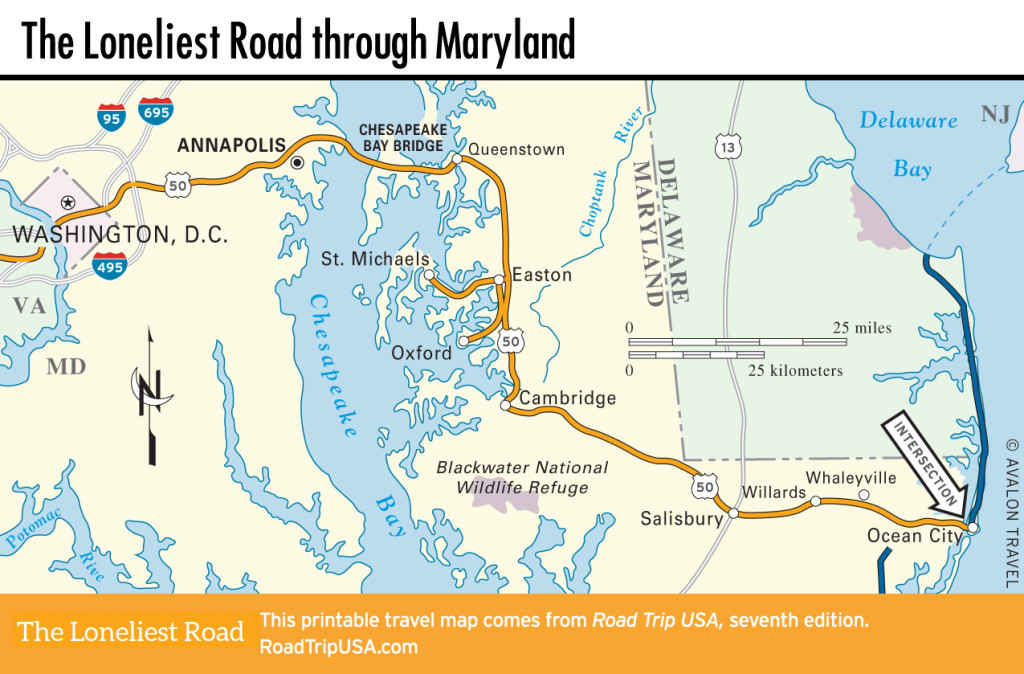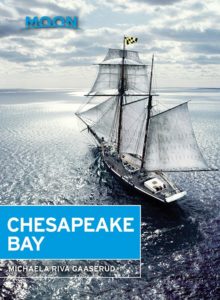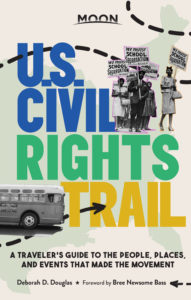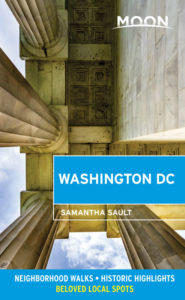Eastern Shore
Easton
Midway across Maryland, 20 mi (32 km) southeast of the Chesapeake Bay Bridge, turn off the freeway and head a half-mile west to explore the well-preserved heart of Easton (pop. 16,494), where the stately Talbot County Courthouse overlooks a compact business district that could easily pass as an English country high street. Besides the many 18th-century structures, the most interesting place to stop is the white wood-frame Third Haven Friends Meeting House, on the edge of town on South Washington Street, built in 1684 and still in use by a Quaker congregation.
The most impressive place to stay in Easton is the stately Tidewater Inn (101 E. Dover St., 410/822-1300 or 800/678-8946, $149 and up), a well restored landmark in the center of town, which offers guests free carriage rides around town on Saturdays in December. Easton also holds the comfortable (and bike-friendly!) Bishop’s House B&B (214 Goldsborough St., 410/820-7290, $185 and up) and the usual range of motels and fast-food places along the US-50 frontage.
St. Michaels and Oxford
The pride and joy of the Eastern Shore is the Chesapeake Bay village of St. Michaels, a colonial-era shipbuilding center turned yachting haven that’s home to the excellent Chesapeake Bay Maritime Museum (410/745-2916, daily, $16). Located right on the waterfront at the center of town, the museum has extensive displays of skipjacks and other historic sailing vessels, which you can watch being restored in the museum workshops. There are also diverse pieces of fishing and hunting gear, plus a working lighthouse, all displayed to conjure up traditional Eastern Shore maritime life.
Although it’s full of lovingly maintained old houses and commercial buildings as well as working wharves, chandlers, and sail lofts, St. Michaels is also a major tourist trap, with all the souvenir shops you could want. The lovely harbor is lined with restaurants like the St. Michaels Crab and Steakhouse (305 Mulberry St., 410/745-3737, Thurs.-Tues.).
After seeing the museum and wandering around the town, if you want to get a feel for the unspoiled Chesapeake, follow the signs southeast from St. Michaels to the historic ferry (9am-sunset daily, $22 per car round-trip, $7 pedestrians round-trip) that shuttles across the Tred Avon River every half-hour or so between Bellevue and Oxford (pop. 604). Oxford, a truly sleepy little Eastern Shore town, has hardly changed since the 1760s, when it was one of two authorized ports-of-entry into colonial-era Maryland. Wander along the waterfront or south along Morris Street to the village center, through what may be the best-preserved colonial townscape left in America. No less an authority than James Michener, who lived in St. Michaels for many years, went so far as to say that the crab cakes served inside the circa-1710 Robert Morris Inn (410/226-5111, $130 and up), opposite the ferry dock, were among the best he’d ever tasted.
Cambridge
Founded in 1684 on the south bank of the broad Choptank River, busy Cambridge (pop. 12,285), unlike sleepy Oxford, is a market town for the surrounding farmlands. Still somewhat industrial in feel, thanks to its now-closed canning and packing plants, Cambridge has some attractive corners, and is also home to the Eastern Shore’s most bizarre range of annual festivals, from February’s World Champion Muskrat Skinning Contest to powerboat regattas and antique-airplane fly-ins held throughout the summer. You can get a good sense of Cambridge character by stopping for a meal at downtown’s popular brew-pub RAR Brewing (504 Poplar St., 443/225-5664), west of US-50, or at Cindy’s Eastside Kitchen (3127 Aireys Rd., 410/228-3830), a cozy breakfast café along the old US-50 frontage east of town.
US-50 through Cambridge has been named the Harriet Tubman Highway, in memory of the Underground Railroad leader who was born enslaved and lived much of her life in this part of Maryland. Her birthplace and other significant locations are being preserved as part of the Harriet Tubman Underground Railroad National Historical Park (4068 Golden Hill Rd., 410/221-2290), which opened in 2017 at the heart of the extensive marshlands and natural areas of the Blackwater National Wildlife Refuge. It has extensive exhibits about her life and work as well as self-guided cycling and driving tours on the Tubman Byway to help understand her political and personal contexts.

















